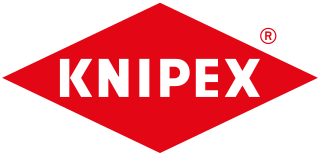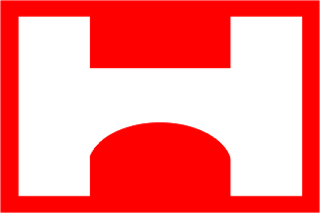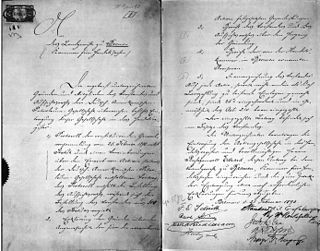
This is a list of the largest companies of Nazi Germany by employees in 1938.

This is a list of the largest companies of Nazi Germany by employees in 1938.
The list is based on Fiedler (1999a, 1999b), who compiled data from a variety of sources. Given the shortage of historical employment data some employment numbers are only estimates and some companies might be missing from this list. Employment numbers are including all subsidiaries as long as the parent company is the majority shareholder, that is, holds more than 50 percent of the stock. An exception is Telefunken, which is included in the list as it was a joint venture of Siemens and Allgemeine Elektricitäts-Gesellschaft which each company holding 50 percent of the shares of Telefunken. Employee numbers are not including those employed in foreign subsidiaries. The only three companies in 1938 with large foreign subsidiaries were Siemens with 11.2 percent of the workforce employed abroad, Allgemeine Elektrizitäts-Gesellschaft with less than 20 percent and Mannesmann with 10 percent. In 1938 seven of the 100 largest German companies were subsidiaries of foreign companies, all of them included in the list. The seven foreign-controlled companies were the subsidiaries of Luxembourgish Arbed (Felten & Guilleaume, Eschweiler Bergwerksverein and Burbacher Hütte), American General Motors (Adam Opel), American International Telephone & Telegraph (Deutsche I.T.& T.-Gruppe), American Singer Corporation (Singer Nähmaschinen), French de Wendel group (de Wendelsche Berg-und Hüttenwerke), Belgian Solvay (Deutsche Solvay) and Dutch-British Royal Dutch Shell (Rhenania Ossag Mineralölwerke). [1]
| Rank | Company | Employees | Industry |
|---|---|---|---|
| 1. | Deutsche Reichsbahn | 703,546 | Railway |
| 2. | Deutsche Reichspost | 397,890 | Postal administration |
| 3. | I.G. Farbenindustrie | 218,000 | Chemicals |
| 4. | Vereinigte Stahlwerke | 197,000 | Mining and steel |
| 5. | Siemens (Siemens & Halske and Siemens-Schuckert) | 165,975 | Electrical engineering |
| 6. | Friedrich Krupp | 123,408 | Mining and steel |
| 7. | Gutehoffnungshütte | 75,781 | Mining and steel |
| 8. | Vereinigte Elektrizitäts- und Bergwerks Aktiengesellschaft | 72,345 | Mining and utilities |
| 9. | Friedrich Flick KG | 71,408 | Steel |
| 10. | Allgemeine Elektrizitäts-Gesellschaft | 65,000 | Electrical engineering |
| 11. | Reichswerke Hermann Göring | 63,000 | Mining and steel |
| 12. | Saargruben AG | 48,448 | Mining |
| 13. | Daimler-Benz | 47,095 | Vehicles |
| 14. | Junkers Flugzeug-und Motorenwerke | 44,015 | Aircraft |
| 15. | Klöckner-Werke | 43,409 | Steel and mechanical engineering |
| 16. | Mannesmannröhrenwerke | 43,000 | Steel |
| 17. | Metallgesellschaft | 41,000 | Metals |
| 18. | Otto Wolff-Konzern | 33,000 | Steel |
| 19. | Arbed | 32,000 | Steel |
| 20. | Salzdetfurth AG | 31,131 | Mining |
| 21. | Hoesch | 30,993 | Steel |
| 22. | Adam Opel | 27,000 | Vehicles |
| 23. | Schering | 26,665 | Pharmaceuticals |
| 24. | Vereinigte Industrieunternehmungen AG | 25,000 | Metals, mining and utilities |
| 25. | Robert Bosch GmbH | 23,233 | Electrical engineering |
| 26. | Auto Union | 22,673 | Vehicles |
| 27. | Deutsche I.T.& T.-Gruppe | 21,000 | Electrical engineering |
| 28. | Deutsche Schiff- und Maschinenbau AG | 21,000 | Shipbuilding and aircraft |
| 29. | Philipp Holzmann | 20,800 | Construction |
| 30. | Hochtief | 20,425 | Construction |
| 31. | Rudolph Karstadt | 20,000 | Retail |
| 32. | Deutsche Erdöl AG | 20,000 | Oil |
| 33. | Deutsche Werke Kiel | 20,000 | Shipbuilding |
| 34. | Hugo Schneider AG | 19,200 | Arms and ammunition |
| 35. | Deutsche Reichsbank | 18,931 | Banking |
| 36. | Christian Dierig | 18,834 | Textiles |
| 37. | Zellstofffabrik Waldhof | 18,402 | Paper |
| 38. | Ernst Heinkel Flugzeugwerke | 18,297 | Aircraft |
| 39. | Rheinisch-Westfälisches Elektrizitätswerk | 17,754 | Utilities |
| 40. | Deutsche Bank | 17,462 | Banking |
| 41. | Deutsche Continental-Gas-Gesellschaft | 17,400 | Utilities |
| 42. | Bayerische Motoren-Werke | 16,968 | Vehicles |
| 43. | Continental Gummi-Werke | 16,606 | Rubber |

I. G. Farbenindustrie AG, commonly known as IG Farben, was a German chemical and pharmaceutical conglomerate. It was formed in 1925 from a merger of six chemical companies: BASF, Bayer, Hoechst, Agfa, Chemische Fabrik Griesheim-Elektron, and Chemische Fabrik vorm. Weiler Ter Meer. It was seized by the Allies after World War II and split into its constituent companies; parts in East Germany were nationalized.

DEA Deutsche Erdoel AG was an international oil and gas company headquartered in Hamburg, Germany. It was a subsidiary of L1 Energy. In 2018, DEA owned stakes in oil and gas licenses in various countries and operated natural gas underground storage facilities in Germany. DEA is a derivation from Deutsche Erdöl-Aktiengesellschaft, the original name of the company. On 1 May 2019, DEA merged with Wintershall to form Wintershall Dea.
Telefunken was a German radio and television producer, founded in Berlin in 1903 as a joint venture between Siemens & Halske and the Allgemeine Elektrizitäts-Gesellschaft (AEG) . Prior to World War I the company set up the first world wide network of communications and was the first in the world to sell electronic televisions with cathode ray tubes, in Germany in 1934.

Knipex is a German manufacturer of pliers, pliers wrenches, and other tools, distributed for global sales. Its tools are principally for professional use in various trades, but they are also increasingly popular for DIY and EDC use as well.

The Vereinigte Stahlwerke AG was a German industrial conglomerate producing coal, iron, and steel in the interbellum and during World War II.

LTS Lufttransport Süd AG, usually shortended to LTS and later branded as LTU Süd, was a German leisure airline headquartered and based in Munich, operating scheduled and charter flights to European and long-haul leisure destinations. It operated from May 1984 until it merged with its parent company, the larger LTU, in 1998.

Philipp Holzmann AG was a German construction company based in Frankfurt am Main.

Cassella AG, formerly Leopold Cassella & Co. and Cassella Farbwerke Mainkur AG, commonly known as Cassella, was a German chemical and pharmaceutical company with headquarters in Frankfurt am Main. Founded in 1798, in the Frankfurt Jewish Alley by Leopold Cassella, Cassella operated as an independent company until 1995, and was one of many predecessor companies of today's Sanofi. Its main products were dyes, drugs, cosmetics and various other chemical products. From 1949, Cassella focused increasingly on pharmaceuticals and cosmetics rather than its former primary focus, dyes. Much of its history is closely associated with the Gans family, a prominent family of industrialists and philanthropists and former owners of Cassella.

Wolfgang Benz is a German historian from Ellwangen. He was the director of the Center for Research on Antisemitism of the Technische Universität Berlin between 1990 and 2011.

Erste Group Bank AG is an Austrian financial service provider in Central and Eastern Europe serving 15.7 million clients in over 2,700 branches in seven countries.
Wolfgang Behringer is a German historian specialising in the witchcraft beliefs of Early Modern Europe. He has worked at the University of Munich, University of York and the University of Bonn as well as published multiple books. He is the author of the book Shaman of Oberstdorf. He also authored A Cultural History of Climate. First published in German in 2000, it was translated into English in 2009. Since 2003, Behringer teaches at Saarland University.

Verlag C.H. BECK oHG, established in 1763 by Carl Gottlob Beck, is one of Germany's oldest publishing houses. It operates in two main divisions: Legal - Tax - Business and Literature - Nonfiction - Science. It has an annual production of up to 1,500 titles including many electronic publications, about 70 professional journals and more than 9,000 titles in print. Its headquarters are in Munich, with a branch office in Frankfurt. Historically, its headquarters were in Nördlingen, the initials of the founder's son and successor, Carl Heinrich Beck, survive in the company's present name. 650 employees work in the Munich headquarters. The 120 scientific editors combined work at the Munich and Frankfurt offices, supporting over 14,000 authors. The Frankfurt office houses the editorial departments of most of C.H. Beck's law journals. Since 1999 the Nomos publishing house belongs to C.H. Beck group, which also has subsidiaries in Switzerland, Poland, the Czech Republic and Romania. As a group of publishing houses, in turnover C.H.Beck ranks among the 10 largest groups in Germany and the 50 largest worldwide.

Deutsch-Amerikanische Petroleum Gesellschaft, also known as German-American Petroleum Company, was a German petroleum company that was a subsidiary of Standard Oil and was founded in 1890. From 1950 onwards the company was called the Esso Deutschland GmbH and has been a subsidiary of the ExxonMobil group since 1999.

The Kapitalanlagegesetzbuch, abbreviated as KAGB, is the German Investment Code for investment management.
W. Kohlhammer Verlag GmbH, or Kohlhammer Verlag, is a German publishing house headquartered in Stuttgart.

Georg Solmssen was a German banker.
The Akademische Verlagsgesellschaft in Leipzig was an important German academic publisher, which was founded in 1906.
Christina Lubinski is a German historian and a full professor at Copenhagen Business School. She is the author and editor of numerous academic books and journals articles. Her work is published in leading international and peer-reviewed journals in the fields of business history, entrepreneurship, management, and organizational studies.

The Deutsche Orientbank was a German bank, founded in 1905-1906 in Berlin and merged into Dresdner Bank in 1931-1932. It was originally intended for financing ventures in the Ottoman Empire and the Khedivate of Egypt.